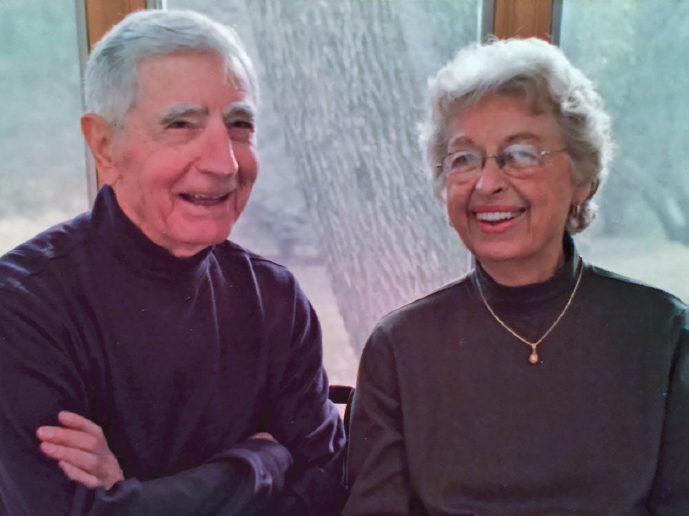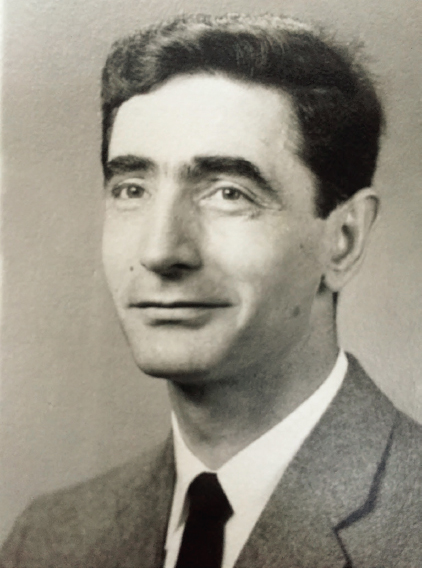

FAZIL ERDOĞAN
1925–2015
Elected in 1997
“For contributions to fracture mechanics.”
SUBMITTED BY THE NAE HOME SECRETARY
FAZIL ERDOĞAN, a former dean of the engineering college at Lehigh University who earned a reputation as one of the world’s foremost experts in fracture mechanics, died October 2, 2015, at his home. He was 90.
He was born February 5, 1925, in Kars, Turkey, to Hamit and Hanım Erdoğan. He received his BS (1948) and MS (1949) degrees in mechanical engineering from the Technical University of Istanbul and in 1952 came to the United States to pursue his PhD at Lehigh. He earned his doctorate in 1955 and joined the faculty in 1957. Over the next decades he went on to chair the Department of Mechanical Engineering and Mechanics and, in the late 1990s, became interim dean of the P.C. Rossin College of Engineering and Applied Science. He retired in 2001 as G. Whitney Snyder Professor Emeritus.
In addition to fracture mechanics, Erdoğan conducted research into applied mathematics and the mechanics of engineering materials. His studies of the propagation of cracks in materials were of critical importance to airplanes, bridges, buildings, and other engineering systems. Over a 30-year
___________________
Adapted from a tribute published by Lehigh University, October 7, 2015 (https://www2.lehigh.edu/news/memoriam-fazil-erdogan-expert-fracture-mechanics).
period, his work was supported by continuous grants from NASA and the National Science Foundation.
He received many of the highest honors in his field. In 1983–84, he spent 10 months at the Fraunhofer Institute for Solid Mechanics in Freiburg, Germany, as a recipient of the Alexander von Humboldt Foundation Senior Scientist Award, one of the top research fellowships given by the German government. He received the Humboldt Award a second time in 1999. In 1993 he was named A.C. Eringen Medalist of the Society of Engineering Science. In 1997 he was elected to the National Academy of Engineering, one of the highest distinctions accorded to engineers in the United States.
In 1998 Lehigh hosted the International Symposium on Mechanics and Applied Mathematics in Erdoğan’s honor. The 3-day event drew many of the world’s foremost experts in the two fields, including many of the more than 40 PhD recipients whom Erdoğan supervised throughout his career. In remarks at the symposium, Ferdinand Beer, a former chair of the Mechanical Engineering Department, credited Erdoğan, with colleagues George Sih and Paul Paris, for bringing to Lehigh a “truly international reputation” in fracture mechanics.
In 2001 Erdoğan spent 3 months in Japan through the eminent scientist invitation program of the Japanese government. The following year, he stayed another 2 months in Japan through the invitation fellowship program of the Japan Society for the Promotion of Science.
In 2008 the Journal of Applied Mechanics published a special issue, based on a symposium in Erdoğan’s honor in Hawaii in 2006, recognizing his contributions to fracture mechanics and applied mathematics. Titled “Honoring Professor Erdoğan’s Seminal Contributions to Mixed Boundary-Value Problems of Inhomogeneous and Functionally Graded Materials,” the issue featured 13 articles, many of them by former students and research collaborators. The guest editorial praised Erdoğan for influencing several generations of engineers working on mixed boundary-value problems in inhomogeneous media: “The analytical approaches that [Erdoğan] had developed with his students in the 1960s and 1970s for the formulation
and reduction of fracture mechanics problems…have motivated researchers working in this area throughout the world…. He continues to be a source of inspiration to the mechanics community in leading the way in the area of mixed boundary-value problems in inhomogeneous and functionally graded media and also in providing selfless guidance to others.”1
Herman Nied, professor of mechanical engineering and mechanics at Lehigh and one of Erdoğan’s PhD students, echoed those comments. “Fazıl Erdoğan has made very significant contributions both to the mathematical and the experimental side of fracture mechanics, particularly to the fracture of pressure vessels and piping and to the behavior of material interfaces.”
Erdoğan was the author of more than 200 scholarly articles and a fellow of the American Society of Mechanical Engineers. He also served as a visiting professor at universities in Germany and at the Technical University of Denmark, and as a visiting research scientist for DuPont Co.
One side of Professor Erdoğan that might be less well known was his love of teaching and the excellent mentoring he provided to his graduate students. “As a student who took several courses from him I can attest that he was an excellent teacher,” said Feridun Delale, professor of Mechanical Engineering at the City College of New York and a former PhD student and postdoc of Erdoğan. “He usually came to class…and derived complex formulas from scratch without ever consulting notes, to the amazement of students. We later learned that he would spend a significant amount of time before class preparing for his lecture, and he did it out of respect for his students. When it came to mentoring doctoral and master’s students, he had an open door policy and one could walk into his office any time to discuss research results or seek advice.”
Fazıl also loved traveling, reading, walking, skiing, and most of all in his later years spending time with his grandchildren.
He was survived by his wife, Barbara (née Blake; she died in 2017); daughter, Ann Tracy; son, Turan Erdoğan; and eight grandchildren.
___________________
1 Pindera M-J, Paulino GH. 2008. Guest editorial. Journal of Applied Mechanics 75(5):050301.




